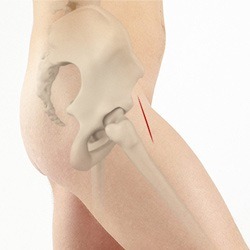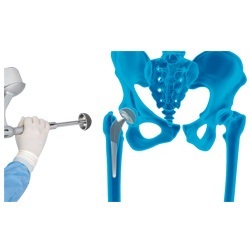Total Hip Replacement
Total hip replacement is a surgical procedure in which the damaged cartilage and bone is removed from the hip joint and replaced with artificial components. The hip joint is one of the body's largest weight-bearing joints, located between the thighbone (femur) and the pelvis (acetabulum). It is a ball and socket joint in which the head of the femur is the ball and the pelvic acetabulum forms the socket. The joint surface is covered by a smooth articular cartilage which acts as a cushion and enables smooth movements of the joint.
Anterior Hip Replacement
Over the past few years, there have been great advances in the treatment options, implants, and minimally invasive techniques. The latest technique in joint replacement such as anterior hip replacement has resulted in a dramatic improvement in outcome.
Hip Hemiarthroplasty
The hip joint is one of the body's largest weight-bearing joints and is the point where the thighbone (femur) and the pelvis (acetabulum) unite. It is a ball and socket joint in which the head of the femur is the ball and the pelvic acetabulum forms the socket. The joint surface is covered by a smooth articular cartilage that cushions and enables smooth movements of the joint.
Hip hemiarthroplasty is a surgical technique employed to treat hip fractures. In this procedure, only one half (ball section) of the hip joint is substituted by a metal prosthesis.
Revision Hip Replacement
Revision hip replacement is a complex surgical procedure in which all or part of a previously implanted hip-joint is replaced with a new artificial hip-joint. Total hip replacement surgery is an option to relieve severe arthritis pain that limits your daily activities. During total hip replacement, the damaged cartilage and bone is removed from the hip joint and replaced with artificial components. At times, hip replacement implants can wear out for various reasons and may need to be replaced with the help of a surgical procedure known as revision hip replacement surgery.
Core Decompression for Avascular Necrosis of the Hip
Avascular necrosis commonly affects the head of the femur. Necrosis leads to tiny cracks on the bone which finally causes the head of the femur to collapse. The condition causes pain due to increased pressure in the blood vessels of the bone marrow at the region of the necrosis.
Minimally Invasive Hip Replacement - Direct Anterior Approach
Total hip replacement involves removing arthritic bone and damaged cartilage in the hip joint, and replacing them with an implant. The hip joint is generally described as a ball-and-socket joint. Take a look at how the end of the thigh bone (femoral head) is replaced with a metal stem and an artificial ball that is secured to the top of the stem.
Minimally Invasive Hip Replacement - Direct Superior Approach
Direct superior approach is a minimally invasive surgical technique used in total hip replacement. This technique may be associated with reduced muscle damage, smaller incision size, and enhanced post-operative recovery.
Mako Robotic-Arm Assisted Technology for Total Hip Replacement
Mako Robotic-Arm Assisted Technology provides you with a personalized surgical plan based on your unique anatomy. First, a CT scan of the diseased joint is taken. This CT scan is uploaded into the Mako System software, where a 3D model of your hip is created. This 3D model is used to pre-plan and assist your surgeon in performing your total hip replacement.










